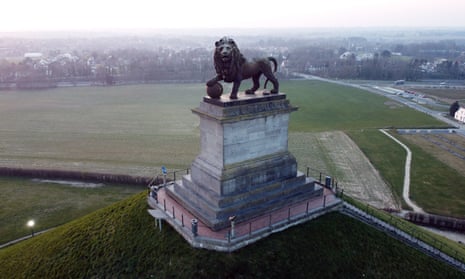It was an epic battle that has been commemorated in words, poetry and even a legendary Abba song, but 207 years to the day after troops clashed at Waterloo, a gruesome question remains: what happened to the dead?
While tens of thousands of men and horses died at the site in modern-day Belgium, few remains have been found, with amputated legs and a skeleton unearthed beneath a car park south of Brussels among the handful of discoveries.
The long-held explanation is grisly: according to reports made soon after the conflict, the bones were collected, pulverised and turned into fertiliser for agricultural use.
“It is certainly a singular fact that Great Britain should have sent out multitudes of soldiers to fight the battles of this country upon the continent of Europe, and should then import the bones as an article of commerce to fatten her soil!” the London Observer reported in November 1822.
Now a battlefield expert has said while the theory is credible, fresh fieldwork is needed to investigate such claims.
Writing in the Journal of Conflict Archaeology, Prof Tony Pollard, director of the centre for battlefield archaeology at the University of Glasgow, has collated vivid descriptions and images from those who visited Waterloo in the aftermath of the 1815 battle, which pitted Napoleon’s forces against a British-led coalition and a Prussian-led one.
The reports reveal the horror of the scene, including a morbid encounter with “a human hand, almost reduced to a skeleton, outstretched out above the ground”, as described by the writer Charlotte Eaton.
Pollard added that the research yielded a number of surprises, “including discoveries of the bodies of women – one of whom at least was dressed in French cavalry uniform”, he said.
But while the accounts include testimony of bodies being burned, they also refer to burials, often with information about their location.
“Bodies were buried in some places in their hundreds in big pits, but in other places they were buried singly or in small groups – the graves were likened to molehills stretched out across the fields,” said Pollard.
Now, as lead academic and an archaeological director at the charity Waterloo Uncovered, Pollard and his team are poised to return to the battlefield next month to continue their archaeological survey, aided by the eyewitness testimony.
“Even if the stories of bone removal are true, I don’t expect every grave to have been emptied, and we have few clues to the whereabouts of surviving graves,” Pollard said. “It would be really interesting to find evidence of pits from which bones have been removed – it’s the sort of disturbance that would produce a geophysical anomaly.”
Among other work, the team will commence a battlefield-wide survey using geophysical techniques such as electromagnetic methods.
Dr Kevin Linch, a University of Leeds expert in the Napoleonic wars, who is not involved in the work, said there was a good case for arguing that the bones of the dead were taken for use as fertiliser, although other activities, such as ploughing or scavenging by animals, could have led to their dispersal.
Linch added that Waterloo Uncovered was important not only because of the insights it may yield, but because the charity involves modern veterans who are living with injuries or trauma.
“As is recognised by the Napoleonic & Revolutionary War Graves Charity, it’s important to find and recognise war graves from this era just as much as any other, and archaeological investigations have the potential to tell us a lot about the lives and deaths of soldiers, and may even identify some individuals’ burial,” he said.
